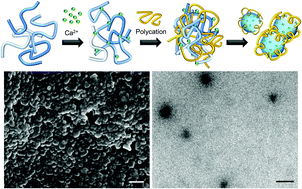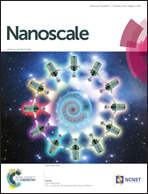A stimuli-responsive nanoparticulate system using poly(ethylenimine)-graft-polysorbate for controlled protein release
Abstract
Proteins have emerged as an important class of therapeutic agents due to their high specificity in their physiological actions. Over the years, diverse protein carriers have been developed; however, some concerns, such as the relatively low loading efficiency and release sustainability, have limited the efficiency of protein delivery. This study reports the use of hydrogel nanoparticles based on a novel copolymer, poly(ethylenimine)-graft-polysorbate (PEIP), as effective protein carriers. The copolymer is fabricated by grafting poly(ethylenimine) (PEI) with polysorbate 20 using carbonyldiimidazole chemistry. Its cytotoxicity is much lower than that of unmodified PEI in RGC5 and HEK293 cells. In comparison with nanoparticles formed by unmodified PEI, our nanoparticles are not only more efficient in cellular internalization, as indicated by the 5- to 6-fold reduction in the time they take to cause 90% of cells to exhibit intracellular fluorescence, but also give a protein loading efficiency as high as 70–90%. These, together with the salt-responsiveness of the nanoparticles in protein release and the retention of the activity of the loaded protein, suggest that PEIP and its hydrogel nanoparticles warrant further development as protein carriers for therapeutic applications.


 Please wait while we load your content...
Please wait while we load your content...